Excerpts from Jim Conrad's
Naturalist Newsletter
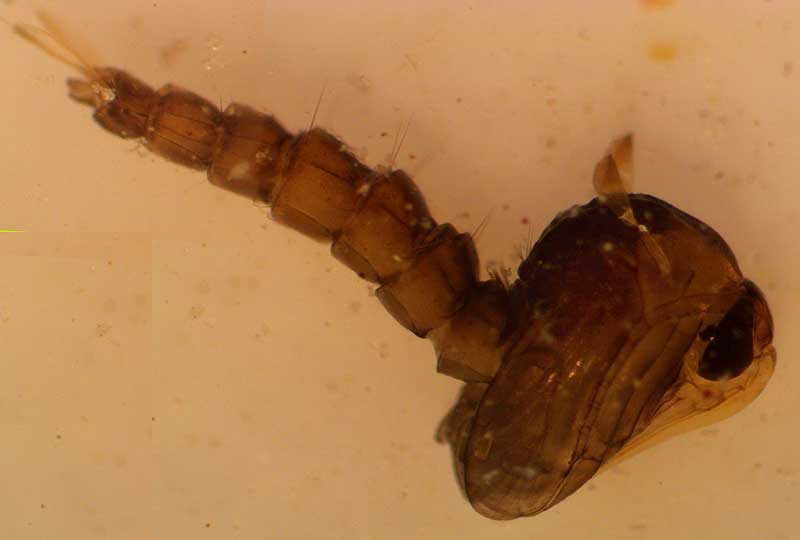
from the June 22, 2014 Newsletter issued from the Frio Canyon Nature Education Center in the valley of the Dry Frio River in northern Uvalde County, southwestern Texas, on the southern border of the Edwards Plateau; elevation ~1750m (~5750 ft); N29.62°, W99.86°; USA
MOSQUITO LARVAE & PUPAE
On Juniper House's deck I keep a dishpan filled with water, with a large rock in its center. That's my birdbath, where birds drink more than they bathe, though sometimes a brave individual will indeed hop onto the rock and dip and flutter until water is splashed everywhere.
If I don't change the water frequently it develops a healthy population of what as a child in Kentucky I called "wiggletails." Wiggletails were immature forms of mosquitoes. A wiggletail suspended in water scooped from my birdbath and held in a glass jar is shown below:
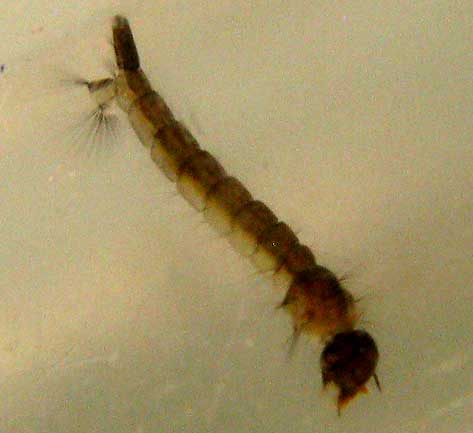
The dark item at the top, the larva's "tail," is its air tube. Most of the time wiggletails rest just below the water's surface, drawing air into their bodies through their air tubes. Just below the air tube and to the left, forming a right angle with the air tube, is the "saddle" bearing groupings of hairs known as "tufts." Tufts are thought to help stabilize the larva in the water. Their position on the saddle and their appearance is important in mosquito larva identification.
You'll notice that on the larva there are no fins to propel it through the water. It moves fairly inelegantly but effectively by jerking its entire body. Mosquito larvae spend most of their time feeding on algae, bacteria, and other microbes at the water's surface.
As a kid I knew that wiggletails turned into mosquitoes, because on the farm we collected rainwater for washing clothes and other things, and our rain barrels were always wiggletail heavens. Despite this early education, later in school when I tried to fit what I'd seen with my own eyes with what I was learning about insect metamorphosis, I ran into a problem. Namely, what about mosquito pupae?
For, like butterflies, beetles, flies, ants and some other insect types, mosquitoes undergo complete metamorphosis, which involves these stages:
EGG --> LARVA --> PUPA --> ADULT
So, where did the mosquito's pupal stage take place, what did it look like, and how had I missed it? This week my birdbath was full of mosquito pupae, and this time I knew what they were. Below, you can see their black, comma-shaped forms floating at the water's surface:
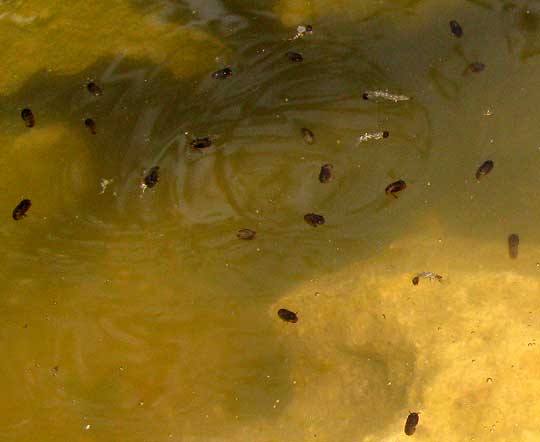
I must have seen these as a kid, but thought they were something else. A Juniper House pupa was dipped up with a spoon and looked at with our dissection scope, so you can see what a mosquito pupa up close looks like at the top of this page.
In that picture the large, oval section on the right is the cephalothorax containing the future mosquito's head and thorax. A closer look at the cephalothorax is provided below:
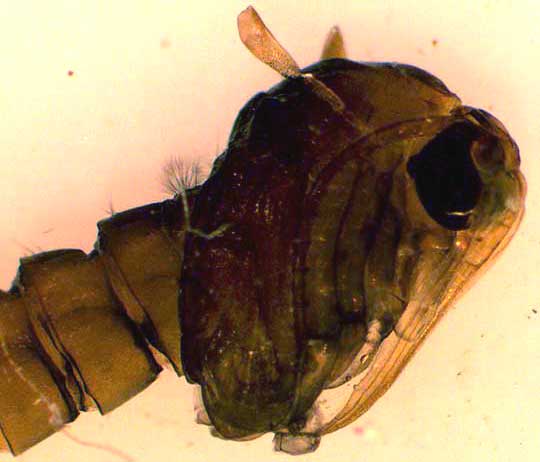
The dark spot at the cephalothorax'sfront is an eye. The pair of small, winglike objects atop the cephalothorax's hump are "trumpets," which the pupa breathes through when resting at the water's surface. If you look closely behind the eye you can see the future mosquito's developing wings and their veins pressed against the cephalothorax's surface. Forming legs also are visible. A close-up of the pupa's other end, the tip of its abdomen, is seen below:
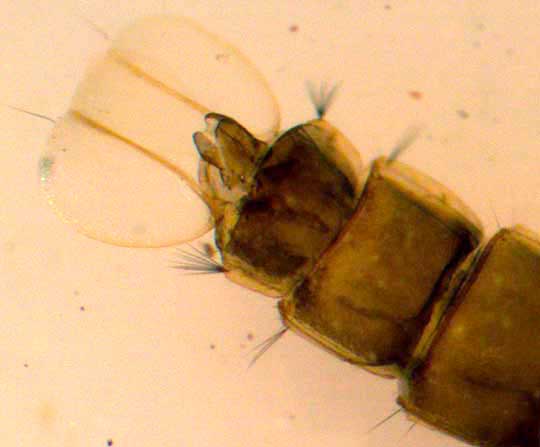
The two semitransparent, fanlike items at the abdomen's tip are "paddles" used for moving through the water. Like the larvae, pupae also swim with violent jerks, in some places earning them the name of "tumblers." Unlike the larval stage, mosquito pupae don't eat. Most of the time pupae simply float at the water's surface while enormous physiological changes occur within them in preparation for their metamorphosis into adult mosquitoes.
A point not to miss here is that the mosquito's pupae are highly mobile. So often insect pupae we encounter -- such as the butterfly's chrysalis, moth pupae overwintering in cocoons, and shell-like puparia of flies -- are immobile, so it's easy to develop the false notion that no pupae are capable of traveling about.